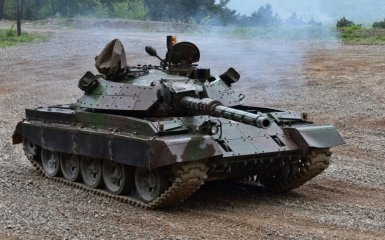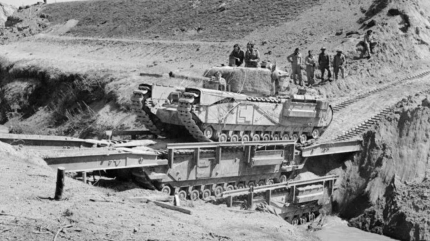Ukraine created a brigade of hybrid tanks received from Germany and Slovenia.
What is known about the brigade of hybrid tanks of the Armed Forces
It is noted that back in April 2022, Slovenia transferred its own old M-55S tanks to Ukraine in the amount of 28 units.
Almost 2 years later, the Ukrainian military is still trying to use them.
According to the journalists of the publication, these hybrid tanks combine the hulls and turrets of the Soviet T-55 tanks of the 1950s with modern Israeli fire control systems and the classic L7 105-millimeter main gun from Great Britain.
The M-55S is a decent tank - it has better fire control than most Russian tanks, plus armor that at 200 millimeters thick without adding dynamic armor blocks beats that of the German-made Leopard 1A5 tanks. But the M-55S is a strange tank, the publication says.
The 36-ton four-seater M-55S, which arrived in Ukraine at the end of 2022, formed a battalion that became part of the 47th mechanized brigade.
Military brigades, according to NATO standards, conducted training on these tanks during the fall and winter.
Before the planned counteroffensive of the Armed Forces of Ukraine in the south of Ukraine in 2023, these tanks were modernized.
Representatives of the General Staff in Kyiv handed over 21 German-made Leopard 2A6 army tanks to the 47th Brigade.
M-55S tanks were sent to a less priority brigade - probably the 67th mechanized brigade.
What is known about the further fate of the M-55S tanks in service with the Armed Forces
It is noted that the 47th brigade took part in the counteroffensive in the south of Ukraine last year and suffered numerous losses in personnel and equipment.
The 67th Brigade held the line around Kreminnaya, losing one M-55S, apparently due to artillery fire.
Last autumn, the Ukrainian counteroffensive stopped - and the Russian army, sensing the weakness and exhaustion of the enemy, immediately launched its own offensive. Six months later, the Russians managed to seize the ruins of Avdiyivka - at the cost of huge costs.
Now both armies are exhausted. As hostilities wind down and both the Russians and Ukrainians try to rebuild their forces, the 27 surviving M-55S are apparently being reassigned, the publication said.
According to photos from the Militaryland project, the M-55S arrived at the new 5th Tank Brigade, which is one of the few intact brigades still in the Ukrainian Army Reserve.
There is evidence that the 5th Tank Brigade also has some of its approximately 200 40-ton four-seater Leopard 1A5s in service. The Leopard 1A5 has the same L7 gun as the M-55S.
Don't think of the 5th Tank Brigade as a mixed brigade with, say, one M-55C battalion and two Leopard 1A5 battalions. Think of it as a brigade with three battalions of L7 mobile guns firing the same ammunition, the authors of the publication emphasize.












